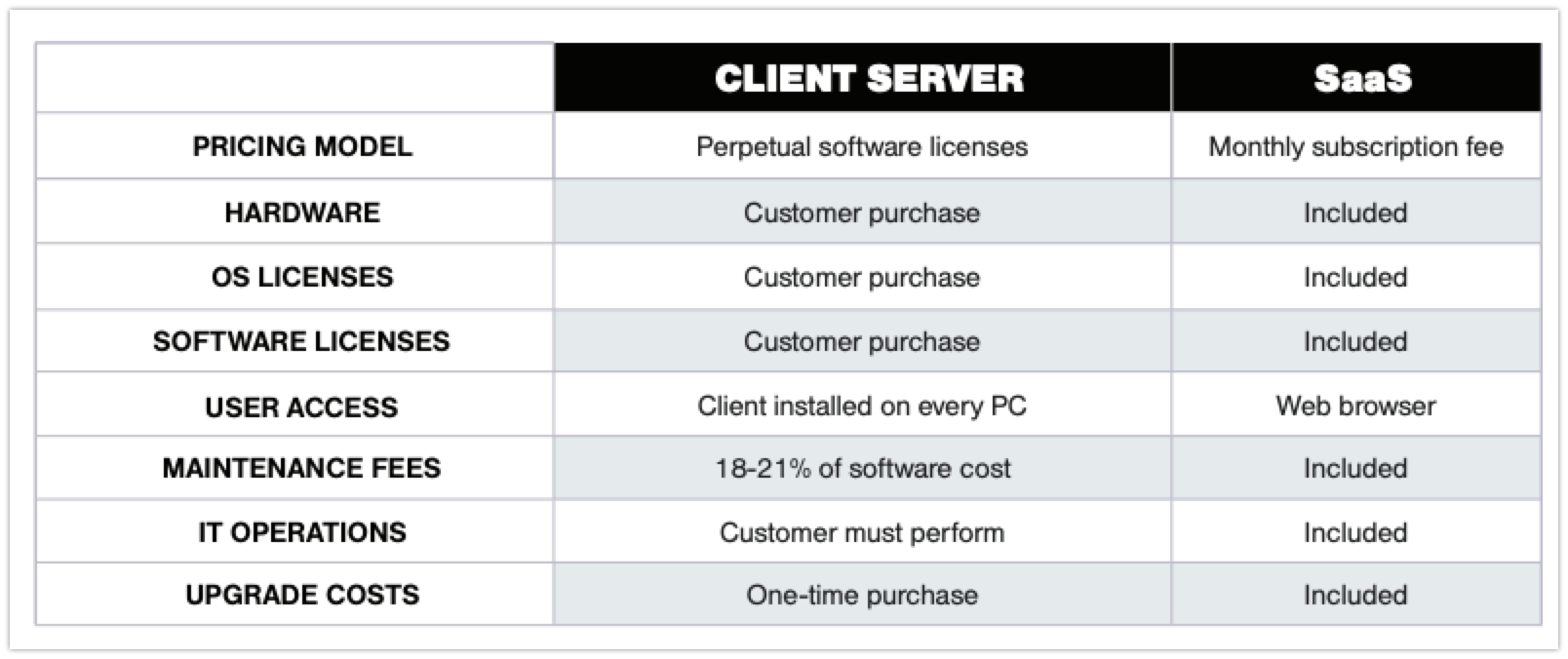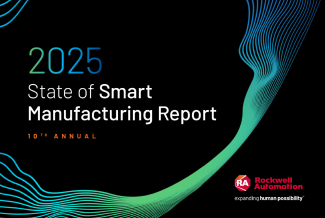

Now Available!
Get your copy of the 7th Annual State of Smart Manufacturing and hear from 300+ manufacturers in this new survey report!

Please complete the form to view
True Software as a Service (SaaS) solutions delivers real financial and operational advantage to businesses, letting companies avoid costly hardware, software licenses and complex version upgrades.
Download this paper to:
- Understand what SaaS really is and how to distinguish true SaaS and cloud solutions from hosted legacy applications and simple license options.
- See how the short-term and long-term benefits of the SaaS approach can deliver financial and strategic value to your business.
- Gain the advantages of rapid application development and continuous innovation.
At A Glance

"Manufacturers benefit from a comprehensive software solution via the SaaS delivery model, speeding technology deployments, lowering costs, and delivering long-term value."
Software as a Service (SaaS) Defined
Software as a Service (SaaS), also known as the cloud, provides the ability for users to access software applications from anywhere, at any time, on any device. A true SaaS solution requires no downloads or updates.
The ownership and maintenance of the SaaS solution falls solely on the cloud provider, not the customer.
SaaS is available to manufacturers via subscription-based pricing, rather than the “perpetual” or “concurrent” license that historically accompanied client/ server software. In true SaaS applications, all users run off a robust infrastructure and a single instance of the software.
There are obvious financial and resource advantages to the SaaS model, as compared to the traditional on-premise software model, in which a manufacturer purchases costly licenses and maintains the IT infrastructure.
Reduced Up-Front Costs
In terms of initial cost, with the subscription pricing model, the up-front investment in software licenses, operating licenses, databases, servers, backup equipment, etc., are eliminated. The service provider maintains all of this as part of the subscription.
Operational Advantage
Because the service provider is operating the system, time-consuming IT operations are eliminated or reduced, including nightly backups, tuning databases, defragging storage systems, applying security patches, and more.
This frees IT staff to focus on high-value activities like data analysis, business analysis, and process improvements, all of which directly contribute to more effective operations.
These advantages only begin to scratch the surface of the SaaS model. To understand the long-term strategic advantages of the SaaS model, we must first understand a few key points about how SaaS services are developed and delivered.
Multi-Tenancy and Agile Development
True SaaS applications are natively “multi-tenant,” which means that there is a single instance of the software running, yet multiple companies access the software code as if it were dedicated to their own use. This enables compute and capacity scale, and ensures the provider is solely focused on maintaining one line of code across all customers.
Non-technical evaluators sometimes worry that their data may somehow “be mixed up with another company’s data;” however, modern database structures and security technology prevent this from happening. More important, only multi-tenant systems can be combined with new software development models to deliver the long-term advantages of the SaaS model.
The most advanced SaaS providers do away with the traditional “waterfall” development schedule (version 1.0, 1.1, 2.0, etc.) in favor of an agile development, or “rapid application development,” methodology.
Rapid Application Development
Using these software development techniques has two important distinctions for the users: First, traditional software upgrades are eliminated because all customers are always using the same, always-current version of code. Companies won’t fall years or multiple releases behind, as is often the case with legacy on-premise software. Second, new features get automatically folded into the base application, and are typically defaulted “off,” enabling companies to activate them when they are ready to use them in opt-in fashion.
The end result is that the underlying feature-set of a multi-tenant SaaS model gets better continuously, and each new deployment of the software dramatically increases the features/functions of the software. This is in direct contrast to most enterprise software models, where companies get frozen into an obsolete release because of the heavy customization required to implement it in the first place, and the cost and impact of having to upgrade.
Pay Attention to How SaaS Applications Are Delivered
There are variations in how a SaaS application can be accessed.
In one model, the developer simply “tweaks” the client/server software, allowing the client software to be installed locally and accessed through the server over an Internet connection.
In many of these applications, a web interface is added that allows a portion of the functionality to be accessed via a web browser.
These applications are typically bandwidth-hungry, as they were originally designed for LANs instead of WANs. A second model is for developers to enhance the functionality of a web browser with plug-in or add-in software, providing an enhanced feature set over what is available in a standard browser.
While these applications use dramatically less bandwidth than the first case described above, there are security issues with downloads and plug-ins, as well as portability issues (e.g., accessing from a home PC).
In the “zero footprint” model, a SaaS application requires only a browser, with no plug-ins or downloads required. As browser functionality is improved, the potential functionality of these applications continues to increase.

Be Aware of SaaS “Pretenders”
As stated above, virtually every software company in the market today is offering some type of service and calling it SaaS.
However, a closer look at these offerings demonstrates that they do not offer the same advantages of a multi-tenant SaaS solution, and in many cases, have some of the same disadvantages of the legacy on-premises model.
The most common type of service that is mistakenly sold as SaaS is actually a hosted application (what is often called “single-tenancy”). Application hosting is a widely available service that is useful in many circumstances. In a hosted application, a data center company provides a dedicated server and related hardware, network connectivity, rack space, power and related services, and sometimes offers management services from the hardware to the operating system and up through the application.
In contrast to multi-tenant SaaS, however, software still has to be managed either by the company’s IT department, by an outsourced third-party, or as a managed service from the software service provider. With SaaS, software management by the SaaS provider is included in the subscription.
Application hosting may be advantageous for a company with limited IT resources, but hosting does not offer any of the long-term advantages of a multi-tenant SaaS or cloud solution. Because three parties are involved (customer, software vendor, hosting company) the costs are often higher than running a system internally— though often with guaranteed uptime and high-quality IT services.
Moreover, because each hosted application is an island unto itself, the model suffers the same challenges surrounding upgrades and customizations as the on-premises model.
A True Manufacturing SaaS Solution
Based on the definitions outlined above, there is a web-based SaaS application that goes beyond the traditional categories of enterprise resource planning (ERP), manufacturing execution systems (MES), and supply chain management (SCM) to offer manufacturers everything they need to operate their businesses efficiently and profitably. The Plex Smart Manufacturing Platform is a true multi-tenant application that provides the flexibility to manage a single department, an entire plant, or a global enterprise.
Manufacturers benefit from a comprehensive software solution via the SaaS delivery model, speeding technology deployments, lowering costs, and delivering long-term value. The Plex Smart Manufacturing Platform uniquely reduces risk and eliminates upgrade cycles by releasing new features in real time as “opt-in”. This means companies can test features before taking it live to production without worry.
While all SaaS models should be the same, different software vendors have convoluted the definition and true value. When evaluating SaaS solutions, consider critical factors like multi-tenancy, leveraging a single line of software code, eliminating legacy version control and upgrades. These are core tenets of native SaaS solutions needed to run your business most effectively



